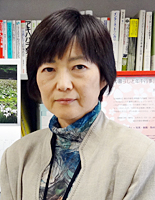Can DX increase the number of people involved? Masako Nakamura (Professor of Tokyo City University)

”Relevant population” has rapidly gained attention over the past few years.
The Ministry of Internal Affairs and Communications launched ”Related Population” Portal Site in 2018, and is promoting initiatives such as the “Related Population Creation and Expansion Project” (from FY 2018 to FY 2020).
The concept of ”relevant populations” offers new possibilities for local governments that are experiencing depopulation and aging.
However, the definition of the relevant population is loose and vague. We support a wide variety of people, from “buy and support” where people live in urban areas and purchase local products, to support through hometown tax payments, to repeat tourists, people living on workdays or living in two locations, disaster volunteers, trial migration, and regional revitalization cooperation teams.
Due to this diversity, challenges have emerged in efforts related to the relevant population. A particularly important point is that the expansion of the ”relevant population” becomes a self-directed goal and does not necessarily lead to long-term solutions to local issues. You will not achieve results unless you clarify what kind of problem you want to solve and what kind of people you want to involve.
In the smart city and super city initiatives, the key word of relevant population is not necessarily explicitly stated, but the CODE FOR activities introduced earlier are also carried out in various places with place names, but in reality they are based on the local government. Not only residents, but also residents from nearby towns and supporters from all over the country often come together across borders with the mission of digitally supporting the community.
In that sense, smart cities and supercities have great potential as boundary objects that create new related populations.
In the early days of the Internet, there was a case in which a small, depopulated area attracted national attention. Yamada Village (at the time, Yamada Village, Nei District, Toyama Prefecture; in 2005 it merged with six surrounding municipalities, including Toyama City, and is now part of Toyama City).
In 1996, the village had a population of about 2,000, with every fourth person over the age of 65, and had been designated as a depopulated area early on.Local leaders took the lead in applying for national projects and receiving funding for the core budget. The village was able to connect the entire village via the Internet by lending computers free of charge to all households that requested them. This has suddenly resulted in one of the highest internet penetration rates in the country (approximately 70% of all villages).
This initiative attracted a lot of attention from the mass media and researchers, and as a result of the coverage, more than 70 university students from outside Waseda University and other universities supported the project as computer volunteers. Many local residents also visited, and the village was further revitalized by supporters from outside the area.
If it were still the case, it would be called regional revitalization by the related population, triggered by information technology.
New technologies and new projects have their own appeal that attracts people. Consciously incorporating such supporters from outside the region as a relevant population is considered to be an important measure even today.
